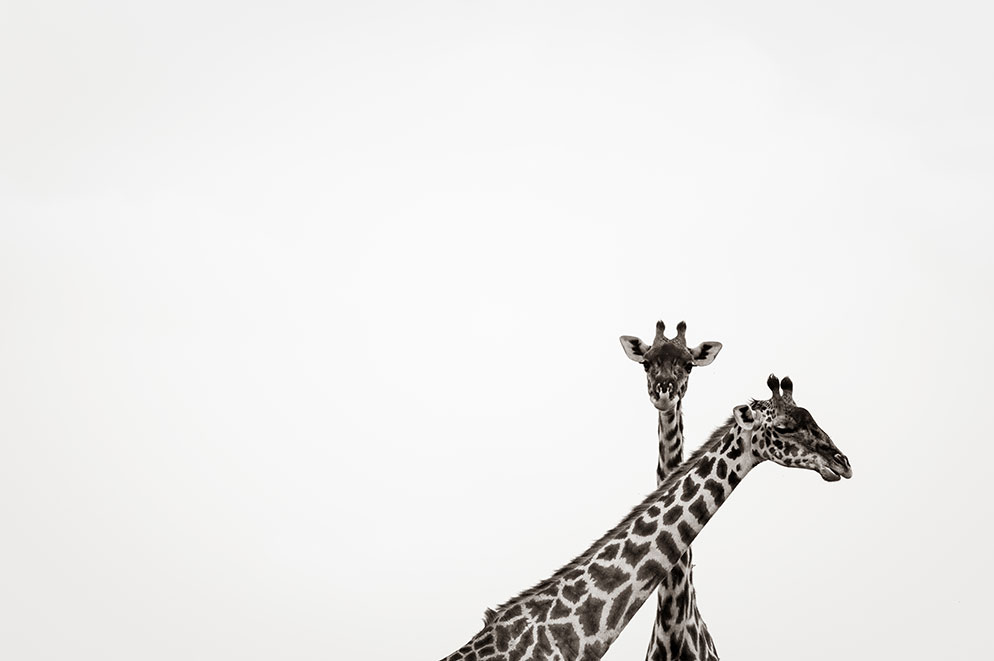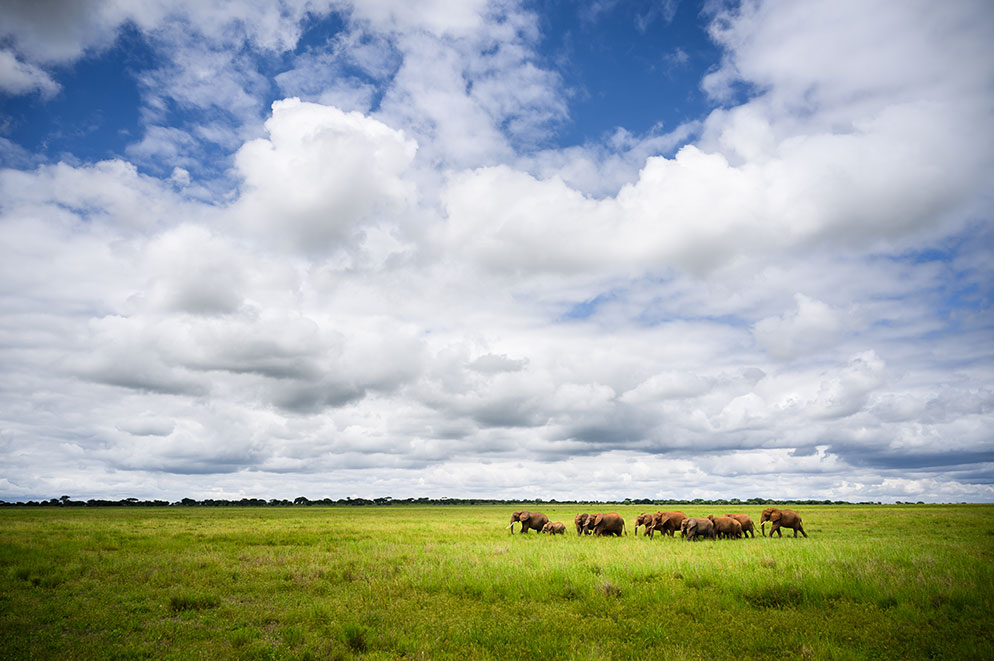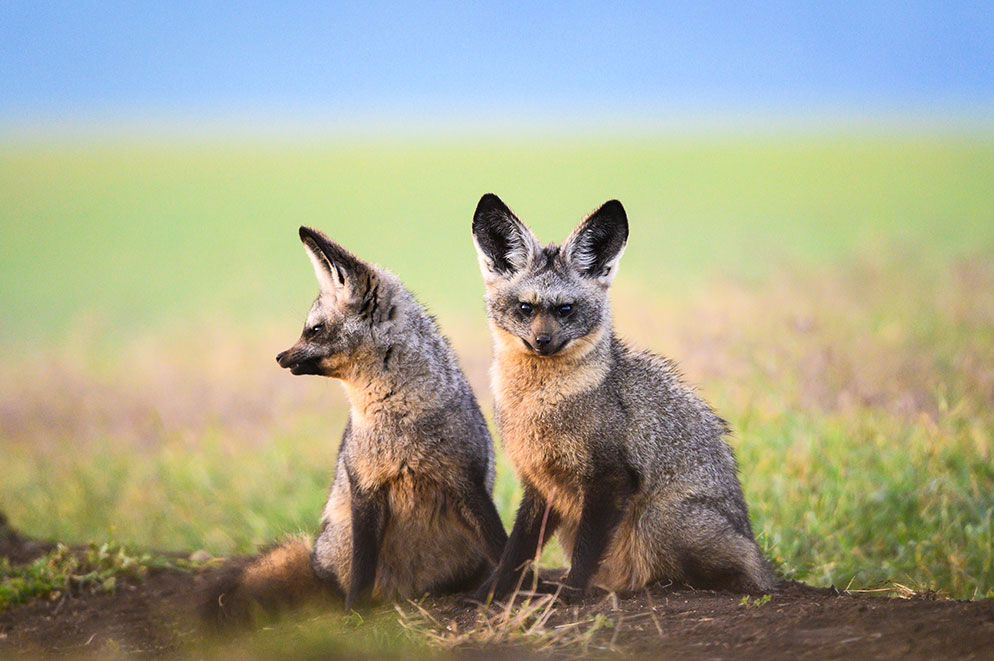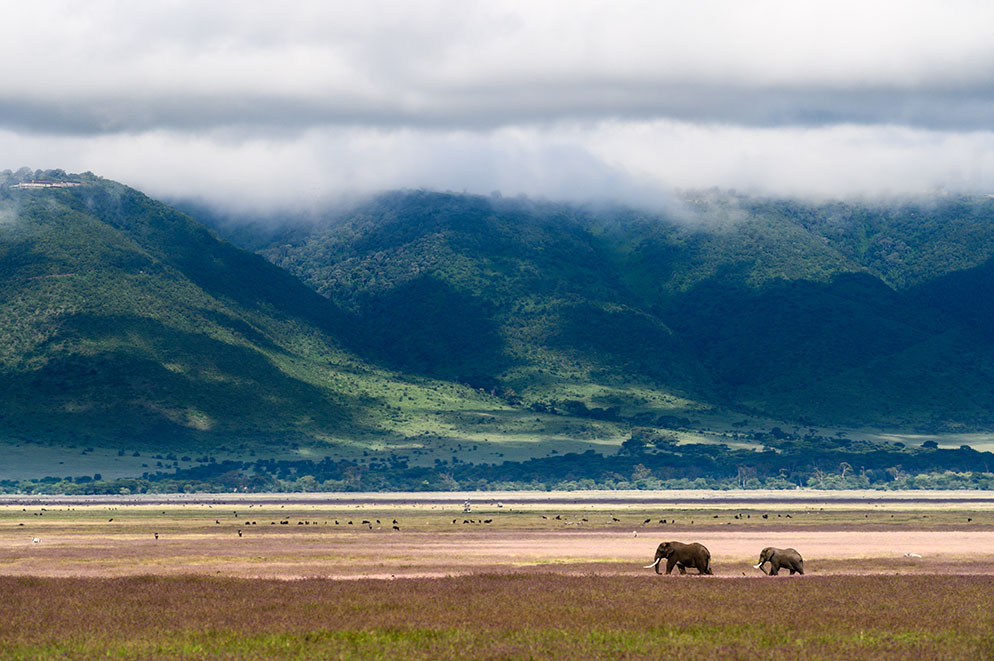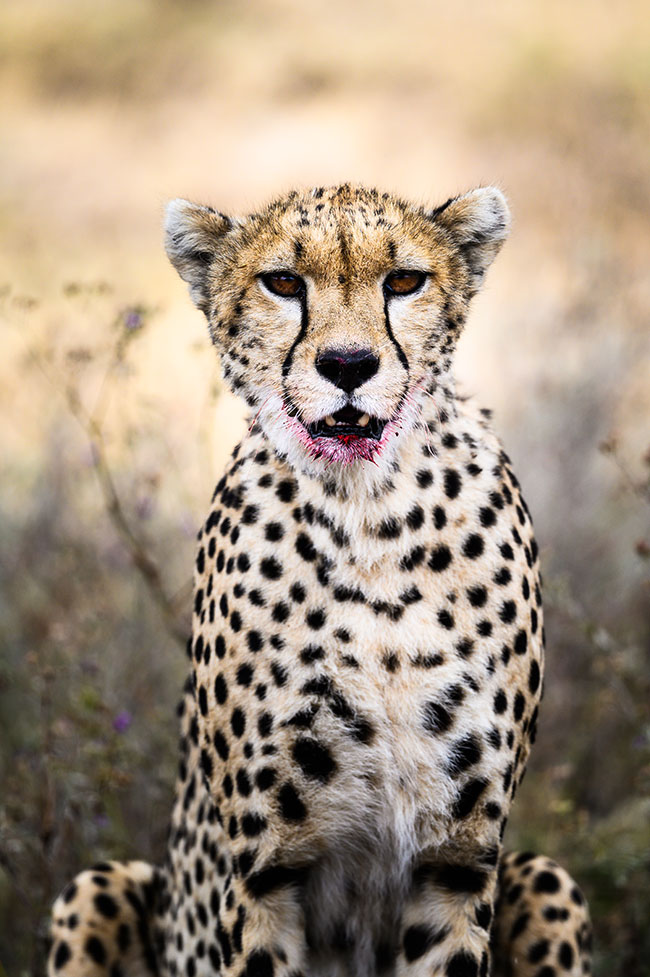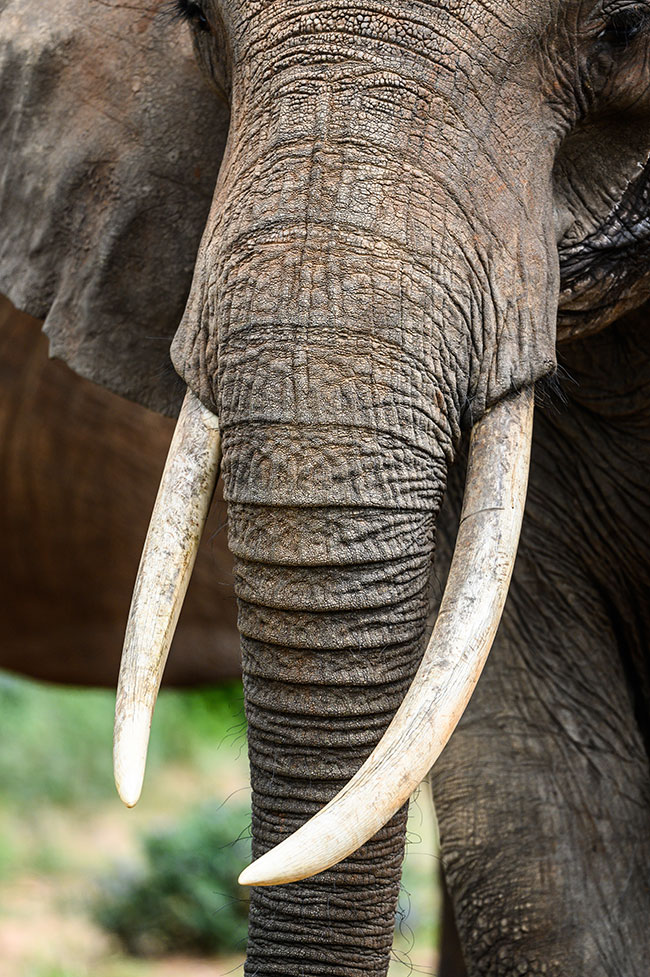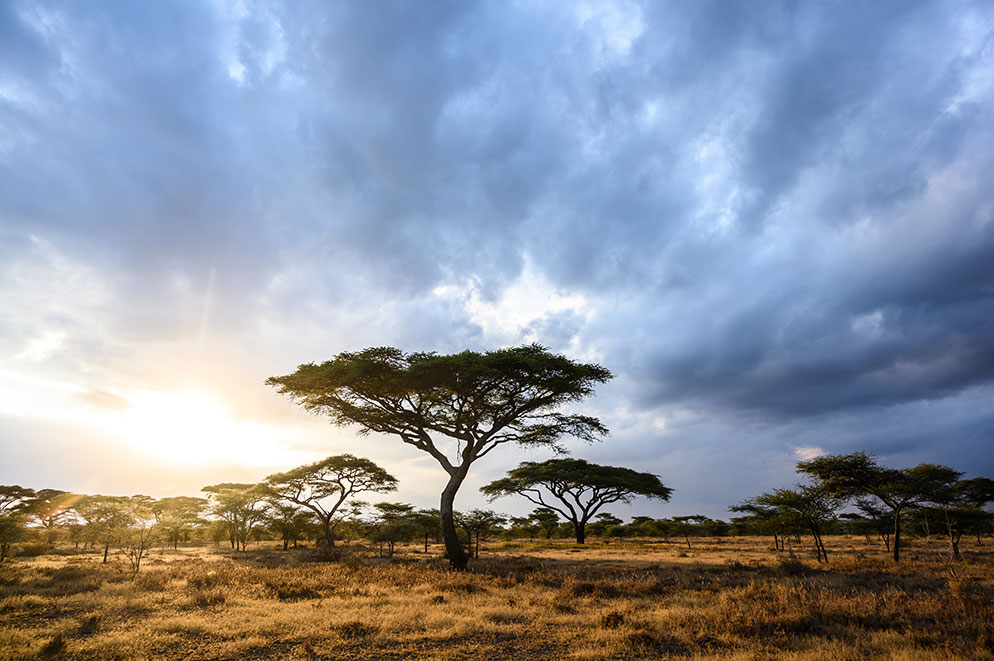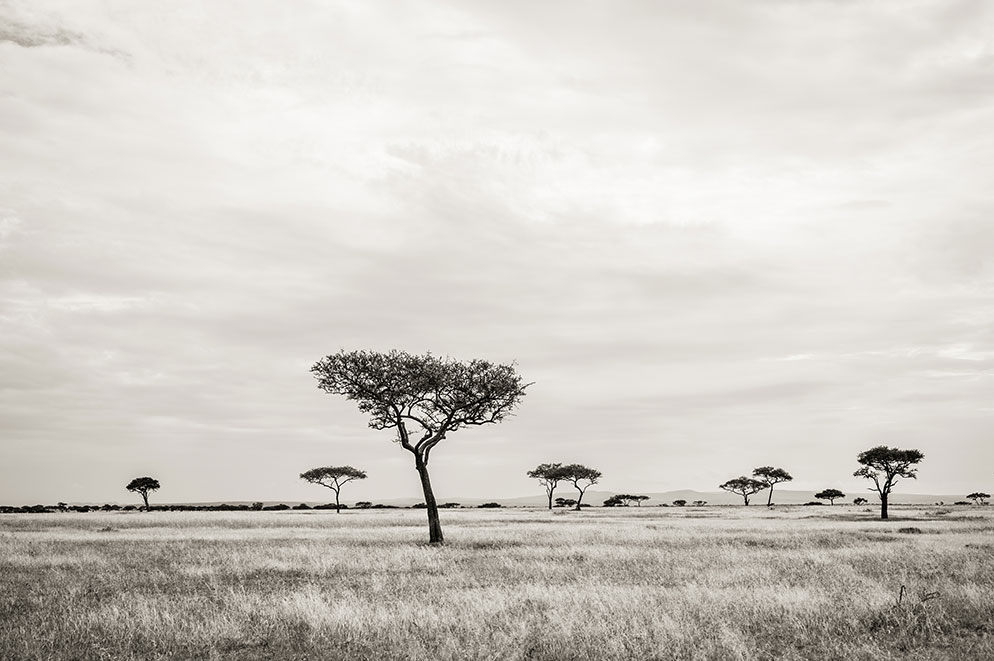Why the Z 6 and the AF-S NIKKOR 500mm f/5.6 Make a Terrific Travel Team
Taylor took this photo in the soft light of mid-morning at Silale Swamp in Tarangire National Park. "Elephants see vehicles pretty often, so they don't seem out of the ordinary or a threat to them. They're used to dominating and aren't too concerned with us. Still, if you drive too close they'll give you a careful look, or even a bluff charge." Z 6, NIKKOR Z 24-70mm f/4 S, 1/2000 second, f/4, ISO 100, manual exposure, Matrix metering.
Taylor Glenn's photo safari in Africa not long ago marked several firsts for him: first visit to Tanzania, first photo safari with his Z 6 and first use of the AF-S NIKKOR 500mm f/5.6E PF ED VR lens.
Taylor's take on the capability of the equipment came down to this: "Because of that camera and lens I was able to get hand-held photos I could never get before."
The photos he got caught and held our attention, largely because Taylor presented us with a stark landscape of beauty and danger in images that often depicted the level of alert awareness it takes for wildlife to survive. One look at the photos and we wanted to know more.
Bat-eared foxes in the Ngorongoro Crater. "They're small, curious creatures, and unlike the elephants, they're always concerned with whatever may come their way, and they tend not to hang around for long periods of time, which makes them a little harder to photograph." Z 6, AF-S NIKKOR 500mm f/5.6E PF ED VR with the Mount Adapter FTZ, 1/500 second, f/5.6, ISO 3200, manual exposure, Matrix metering.
"The Ngorongoro Crater in the Ngorongoro Conservation Area is a spectacular environment and ecosystem," Taylor says. "The elephants happened to be walking through a streak of sunlight amid the layers, colors and atmospheres." Z6, AF-S NIKKOR 70-200mm f/2.8E FL ED VR with the Mount Adapter FTZ, 1/4000 second, f/5.6, ISO 500, manual exposure, Matrix metering.
The Lure of Tanzania...
For Taylor, a lifestyle, travel and advertising photographer, Tanzania was a personal project. Known for the remarkable ecosystem of the Serengeti region, which is among the natural wonders of Africa and one of the ten natural travel wonders of the world, Tanzania is, as Taylor says, "one of those places that you just have to see."
Which means it's also a popular travel destination. "But we really wanted to be in places where there wouldn't be a lot of other people," he says, and he was fortunate to be able to book a tour that made that possible. "It was important to me to show how the lives of the animals are dictated by their environment, and I wanted an experience that would let me really see what surrounds the animal life there."
Taylor observed this cheetah in the northwestern part of the Ngorongoro Conservation area from early morning to late afternoon and got this picture shortly after she brought down a Thomson's gazelle. "We followed the entire hunt and kill, and we were able to observe her feeding from a close distance—but not too close." Z 6, AF-S NIKKOR 500mm f/5.6E PF ED VR with the Mount Adapter FTZ, 1/1600 second, f/5.6, ISO 400, manual exposure, Matrix metering.
"This composition is all about shape and texture, and it's the detailed study that's the balance to the pull-back shot of the herd and the duo in the landscape. This was in the Silale Swamp, with the 500mm, wide open for the high shutter speed it allowed. It's amazing how versatile and sharp this lens is." Z 6, AF-S NIKKOR 500mm f/5.6E PF ED VR with the Mount Adapter FTZ, 1/2000 second, f/5.6, ISO 800, manual exposure, Matrix metering.
I wanted to travel light, but I knew I'd need a telephoto lens for the wildlife shots I wanted to get. The 500mm took care of both.
A small herd of wildebeests in the Western Serengeti area of the national park. Their migration is a major draw for the area, but the herds are not always easily found. "I saw them moving single file on the horizon and asked the driver to get me into position to create a graphic composition using the animals and the landscape. Having a driver-guide who understands what you're trying to do as a photographer is absolutely critical." Z 6, AF-S NIKKOR 500mm f/5.6E PF ED VR with the Mount Adapter FTZ, 1/200 second, f/5.6, ISO 800, manual exposure, Matrix metering.
...and the Realm of the Possible
Taylor had been working with the Z 6 off and on for about two months at the time of the safari; now one of "the main tools" in his kit. One of the main convincers was, he says, "to be able to see basically a preview of what the image is going to be because of the EVF [electronic viewfinder]. You're essentially seeing a finished image while you're working, and that really got me excited about the possibilities of mirrorless. What that viewfinder was doing was changing the way we use cameras."
Another image from the Western Serengeti. "I'd photographed them with different lenses and in different ways, but I went to the 500 to isolate them against the sky, eliminating everything else." Z 6, AF-S NIKKOR 500mm f/5.6E PF ED VR with the Mount Adapter FTZ, 1/3200 second, f/5.6, ISO 800, manual exposure, Matrix metering.
Equally important on this trip was the 500mm f/5.6 lens, which solved a particularly tough problem. "I wanted to travel as light as possible," Taylor says, "but I knew I'd need a telephoto lens for the wildlife shots I wanted to get. The 500mm took care of both, and in combination with the Z 6 it was absolutely insane. I cannot believe how good that camera and lens combo did on the trip."
He balanced traveling light with versatility by adding a NIKKOR Z 24-70mm f/4 S and an AF-S NIKKOR 70-200mm f/2.8E FL ED VR to the lens lineup, but it was the 500mm that enabled him to make hand-held images he would have once found impossible.
"With the 500mm, you've got a compact lens with Vibration Reduction," Taylor says. "Now, combine that with the sensor on the Z 6 and you have incredible image quality at higher ISOs. So you have the ability to confidently increase the ISO to match the exposure to allow for hand holding the lens for high-quality files."
Taylor cites one photograph in particular: an image of two wary bat-eared foxes. "I shot that at 1/500 second at ISO 3200, and that file is just amazing. I shot it in early morning, before the sun had come over the hills. There was not a whole lot of light, and it was amazing to be able to hand hold the camera and get that photo. I could not have made that image a few years ago."
"You see acacia trees all across the landscape in Africa," Taylor says, "and I'm a tree guy—I love making tree pictures wherever I go. This was taken in Ndutu, in the Ngorongoro Conservation Area. We hadn't seen the sun all day, and then the light came through the clouds long enough for me to get a few frames." Z 6, NIKKOR Z 24-70mm f/4 S, 1/250 second, f/5.6, ISO 100, manual exposure, Matrix metering.
A set of acacia trees in the sparse landscape of the Western Serengeti. "It was an overcast day, and if the light isn't working, I go for a graphic composition and then, as with several other of my black-and-white images from the trip, I take the color out later. My feeling is, 'Okay, this is what I'm given, but I can make more of it.'" Z 6, NIKKOR Z 24-70mm f/4 S, 1/500 second, f/5.6, ISO 100, manual exposure, Matrix metering.
In truth, Taylor was confident from the start. "I didn't take a tripod, not even a beanbag on the trip. I had nothing. I move around a lot when I'm shooting. And when I'm in the confines of the vehicle, where slight movements completely change a composition, that's another benefit of this camera and lens setup: it's so small and light I can make quick, subtle adjustments. That was a powerful experience for me on this trip, and I was just blown away by what was possible."
Seems the realm of the possible just keeps getting larger, doesn't it?

